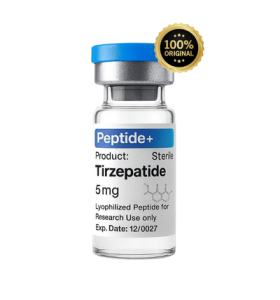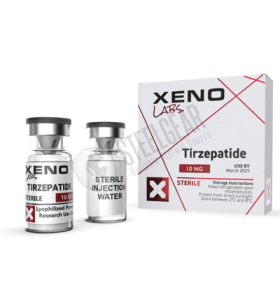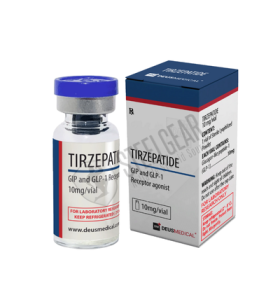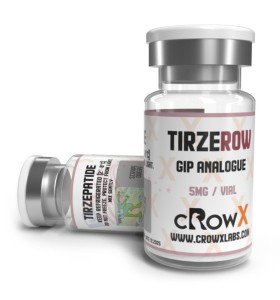Buy Tirzepatide Online – Dual GIP/GLP-1 Agonist for Next-Level Weight Loss
Tirzepatide : Revolutionising Type 2 Diabetes Treatment
Another GIP receptor antagonist utilizes in the management of type II diabetes is tirzepatide which has attracted a lot of attention. It is one week injectable medicine developed by Eli Lilly and company under the category of GLP-1 and GIP receptors agonists. This dual action makes it possible to maintain and manage diabetes type 2, as well as reducing the weights;a factor that could make it a darling tool for managing the type among patients.
Mechanism of Action
Tirzepatide displaces the impact of two hormones GLP-1 and GIP which have a critical participation in glucose control. It is, however, understood that GLP-1 act as an incretin, which enhances insulin release in relation to meals, suppress glucagon secretion, and decelerate gastric emptying.
It also plays a part in insulin secretion while it has other functions in fat metabolisms. By stimulating both receptors, tirzepatide increases glucose dependent insulin release and thereby lowers blood glucose while reducing the risk of hypoglycemia.
Clinical Trials and Efficacy
More so, the latest clinical studies have clearly shown that tirzepatide is effective in enhancing glycemic control with remarkable efficiency. Tirzepatide was compared with insulin and other GLP-1 receptor agonist in the clinical trial program called SURPASS.
It was ascertained that tirzepatide helped to decrease the HbA1c levels, a measure of average blood glucose concentration of the last three months and lose more weight than in the case of traditional therapy.
This and in another study, participants taking tirzepatide experienced an average reduction of HbA1c by more than 2 percentage points below baseline. Also, majority of patients declared about a significant weight loss, usually of 10% or more of the initial body weight, within 40 weeks.
This is especially so because the use of weight loss can go a long way in improving the efficiency of diabetes control and consequently the individuals’ health.
Some Of The Benefits Outside Diabetes Management
That glucose-lowering action of tirzepatide is not its only advantage of the drug. Life-style modifications including weight management are an integral in the treatment of type 2 diabetes, and tirzepatide has favourable outcomes in weight reduction.
This is important since majority of clients with type 2 diabetes are usually obese. Bhati et al also suggested that improvement in blood sugar levels and weight loss are likely to enhance the symptoms of diabetes as well as lessen the probable complications.
Further, the weekly dosing regimen improves the compliance compared to daily dose medications making it easy for the patients. This could therefore lead to better control of the disease and risks that are associated with the same such as diabetes.
Safety and Side Effects
However, they wish to note that like any drug, tirzepatide comes with its fair share of benefits and possible side effects.
Some of the emergent side effects include gastro intestinal disturbances including vomiting and diarrhea.
Most of these symptoms are temporal whereby they manifest themselves in the initial weeks of using the medication and then disappear as the body comes to terms with the new drug.
Although it is very rare, there are potential side effects that should not be overlooked, and these comprise of; pancreatitis and kidney disorders.
Patients should therefore consult their healthcare providers and explain their medical history so as to determine the possibility of using tirzepatide.
Monitoring should also be done regularly in order to avoid any bad impacts since they may arise in future.
Conclusion
Taken together, tirzepatide is a novel agent in the management of type 2 diabetes. The DUOSPECT™ has a dual mode of action, thus not only helping regulate the blood sugar level but also supporting weight loss efforts in diabetics. With more data set being done in the future, tirzepatide has the promise to become a key commodity in diabetes treatment, hope and support for the patients with difficulty in achieving their outcomes.
FAQs
1. How is tirzepatide administered?
Another factor is the regimen of taking tirzepatide through weekly subcutaneous injection which can be administered at the patient’s home. For better result it is vital to adhere to the set schedule.
2. Who can use tirzepatide?
Tirzepatide is mostly for patients with type 2 diabetes with high BMI who require improvements in glycemic control and overall weight reduction. However, it should always be as a rule to seek the advice of a doctor to know whether the intended drug is suitable for the patient or not.
How is tirzepatide administered, for what purpose it is applied and what are the most frequent consequences likely to be encountered by people that take it?
They also experienced other usual side effects which include gastro-intestinal tract manifestations such as nausea, vomiting, and diarrhoea.
4. Relative to other diabetes medications what do we understand about tirzepatide?
Tirzepatide has been proved to be more effective than comparators in reduction of HbA1c and weight loss, which are symptomatic features of diabetic patients.





























